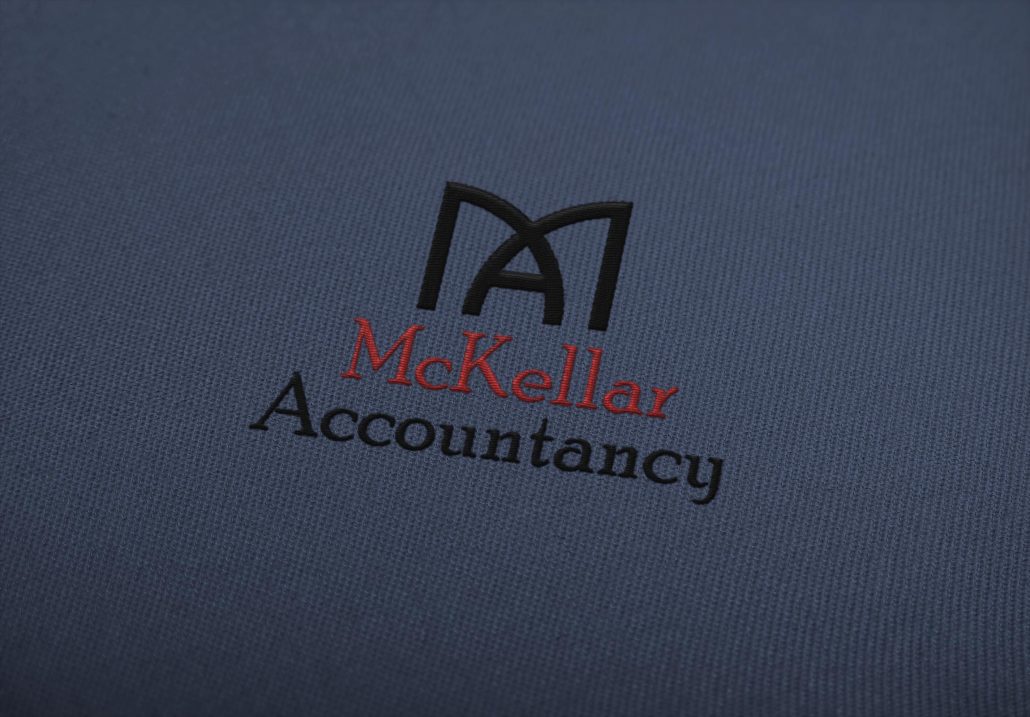[av_image src=’https://www.mckellaraccountancy.com/wp-content/uploads/2017/02/Paper-Hot-Cup-Mockup-vol-4-1500×430.jpg’ attachment=’403′ attachment_size=’featured’ align=’center’ styling=” hover=” link=” target=” caption=” font_size=” appearance=” overlay_opacity=’0.4′ overlay_color=’#000000′ overlay_text_color=’#ffffff’ animation=’no-animation’][/av_image]
[av_heading heading=’Essential Employer Update 2019′ tag=’h3′ style=” size=” subheading_active=” subheading_size=’15’ padding=’10’ color=” custom_font=”][/av_heading]
[av_textblock size=” font_color=” color=”]
We look at recent developments in payroll practice, employment law and tax.
Payslip changes
From 6 April 2019, change may be needed to payslips for employees in some circumstances. If employee pay varies because of time worked, perhaps under a variable hours or zero hours contract, it will be necessary to show the number of hours worked for which payment is made. The number of hours must be shown as either a single aggregate figure or separate figures for different types of work or different rates of pay.
In a move that reflects the diversity and complexity of employment status, the right to be given a payslip is also extended to all ‘workers’ from April 2019. At present only employees have this right, and not all ‘workers’ are employees. HMRC offers some guidance on how ‘worker’ status should be assessed at bit.ly/2QyKFEW. Employers may need to bear in mind that whereas employees are automatically on the payroll, ‘workers’ may not be. It will therefore be prudent to check payroll software can accommodate such change, where relevant. We are able to assist with any issues regarding employment status. Please do not hesitate to contact us for further advice.
Student Loan repayments
The Postgraduate Loan (PGL) is a new type of student loan available in England and Wales. Employers need to be ready to deal with this new type of loan repayment via payroll as well as the two existing types of student loan (SL).
The first PGL repayments will be made from April 2019. Employees could be liable to repay a SL type and PGL simultaneously, as they are separate loan products. Employers would thus have to make both PGL and SL deductions.
PGL repayment will necessitate the introduction of new forms: PGL1 is the new start notice, requiring an employer to make deductions for an employee with a PGL. HMRC will advise employers to stop making deductions by sending a PGL2. The first PGL1s will be issued alongside the SL deduction start notices (SL1s) in February/March 2019. HMRC will update the starter checklist to include a section for PGLs. P45s will not change, but P60s will have a new box for PGL deductions. SLs and PGLs will be started and stopped independently; should an employee pay off both a SL and PGL, for example, the employer would receive both an SL2 and a PGL2. HMRC would prefer PGL and SL deductions to be shown separately on payslips.
Thresholds for 2019/20
From 6 April 2019, the repayment threshold for Plan 1 SLs is £18,935, and £25,725 for Plan 2 loans. SLs are repaid at 9% over the relevant threshold.
The PGL repayment threshold is £21,000. PGLs will be repaid at a rate of 6%, deductions being collected through the normal PAYE process.
National Minimum Wage issues
New rates for the National Minimum Wage (NMW) and National Living Wage apply from April 2019. The hourly rates rise to £3.90 for apprentices; £4.35 for those under 18; £6.15 for those aged 18 to 20; £7.70 for those aged 21 to 24; and £8.21 for those aged 25 and over.
HMRC reports frequent errors when apprentices are paid. Apprentices aged 19 or over, who have finished their first year of apprenticeship, are entitled to the age-related minimum wage. HMRC has also clarified that in some circumstances, those on work experience or internships may qualify as workers for minimum wage purposes. The position here is complex, and HMRC guidance now includes a new section on ‘unpaid work trials’ bit.ly/2RAZdbB. Professional guidance can be needed in this area, and we should be delighted to be of assistance.
NMW for sleep-in shifts, particularly in the care sector, has caused concern over recent years. The Court of Appeal has now reversed an earlier Employment Appeal Tribunal decision, meaning sleep-in shift workers are now currently entitled to NMW only for time they are awake ‘for the purpose of working’. Appeal to the Supreme Court may change the outlook again, but this is the current position. The Acas Helpline (0300 123 1100) offers guidance if employers are uncertain what to do.
Motoring round-up
Autumn Budget 2018 announced that for the purposes of company car tax, the relevant CO2 emissions figure for cars will be based on the new Worldwide harmonised Light vehicles Test Procedure (WLTP). For cars registered before 6 April 2020 however, the current New European Driving Cycle (NEDC) test will be used. Spring Statement 2019 will report on the government’s review into the impact of WLTP on company car tax generally.
To enhance the use of electric vehicles, the Budget also announced that the current 100% first year allowance for expenditure on electric charge point equipment is extended until 31 March 2023 for corporation tax, and 5 April 2023 for income tax. Employees who charge their own vehicles using an employer provided charging point do not incur a benefit in kind charge from 6 April 2018. This means such employee benefits do not need to be reported on the 2018/19 P11Ds.
Van benefit charge and fuel benefit charge for unrestricted use of an employer provided van increase from 6 April 2019. The flat rate for private use of a van becomes £3,430 for 2019/20. The flat rate charge for van fuel benefit increases to £655 for 2019/20.
As you are no doubt aware, the benefit in kind charge on an employer provided car is based on the list price of the vehicle, multiplied by a percentage linked to the car’s CO2 emissions. Diesel cars are generally subject to a 4% supplement unless the vehicle meets the Euro 6d standard. HMRC has issued guidance on how to report, payroll or calculate the cash equivalent for diesel cars meeting the Euro 6d emissions standard bit.ly/2GWTWHg.
The car benefit percentage charges are generally due to increase by 3% from 6 April 2019. To calculate fuel benefit charge for a car, the multiplier increases to £24,100 for 2019/20.
We can help with benefit in kind reporting, such as submission of P11Ds or decisions on payrolling of benefits. Please do not hesitate to get in touch.
Termination payments: timetable again revised
The timescale for changes in the tax and National Insurance treatment of termination payments has altered considerably since first suggested in Budget 2016. Here the issue of whether payment to employees represents earnings or compensation can prove challenging, particularly in the complex area of payments in lieu of notice (PILONs).
Change to the tax treatment of termination payments began in April 2018, with the introduction of the post-employment notice pay calculation. At that point, it was expected that National Insurance changes would begin from April 2019. Budget 2018, however, delayed this for a further year. This means that the employer-only National Insurance Contributions (NICs) charge on termination payments will not now take effect until 6 April 2020. From this date, Class 1A employer NICs will apply to termination payments exceeding £30,000, even where these represent compensation payments. The charge is expected to arise and be collected in real time, rather than at the end of the tax year, as is customary for Class 1A payments.
Planning employee termination packages can be complex, and we are happy to offer advice.
Pensions auto-enrolment update
The next increase in auto-enrolment contributions takes effect from 6 April 2019. Employers are responsible for ensuring that increases are implemented. The new minimum contributions are designed to ensure a total minimum contribution of 8% from this date. This will usually be made up of an employer minimum contribution of 3% and staff contribution of 5%.
It is recommended that employers write to staff, advising them of the new minimums. The Pensions Regulator website offers extensive guidance in this area. It includes advice on how to set up the increased contributions and a pro forma letter to send to staff bit.ly/2sgpqxL.
IR35: further employer compliance to come
Budget 2018 announced changes to the ‘off-payroll’ working (IR35) rules in the private sector. These changes, subject to consultation, are due to take effect from April 2020 and will impose a significant compliance burden for some employers engaging individuals who work via a personal service company (PSC).
The IR35 regime exists to ensure that where someone works for a client via an intermediary, such as a PSC, they do not thereby avoid being taxed as the client’s employee. In the public sector, responsibility for deciding if IR35 rules apply lies with the party engaging the worker. From 6 April 2020, this responsibility will also extend to the private sector – but only to ‘medium’ and ‘large’ businesses. When engaging someone working through a PSC, these businesses will have to decide if IR35 rules apply. If so, they must deduct income tax and employee National Insurance contributions (NICs), and are liable for employer NICs.
‘Small’ businesses engaging such workers are not affected by the change. The definition of a ‘small’ business is to be based on the Companies Act 2006 definition of a small company. Companies are small if they meet two of these three criteria: having turnover of £10.2 million or less; £5.1 million or less on the balance sheet; having 50 or fewer employees.
Planning ahead
Employers with duties beginning in 2020 have some time to prepare. Planning should include allocating responsibility for engaging workers; and collating information as to how work on individual contracts is undertaken, in order to make the employment status decision. There may also need to be consideration of how tax and NICs are processed. In some cases, employers and workers may prefer to change existing arrangements, with workers being taken onto the payroll. Small businesses will need systems in place to alert them if they are set to make the transition to medium.
HMRC has an online tool which can be used to decide whether IR35 rules apply to any given contract. The Check Employment Status for Tax (CEST) tool can be used anonymously, and the findings printed. The results are binding on HMRC unless a compliance check subsequently finds that information supplied was inaccurate. As part of the IR35 reforms, HMRC is examining areas in which CEST itself can be improved.
Childcare changes
Childcare support is in transition. Employer-Supported Childcare (ESC), via childcare vouchers and directly contracted childcare schemes, closed to new applicants on 4 October 2018. The government intends gradually to substitute support via Tax-Free Childcare (TFC). The changes have no impact on workplace nurseries, which remain a tax-free benefit.
Although employers may still provide childcare vouchers to new applicants, these would be subject to income tax, and both employee and employer Class 1 National Insurance contributions, making provision more costly and creating an additional employer workload. It should be stressed that though employees can switch from ESC to TFC, they cannot rejoin ESC, and it is advisable to consider better-off calculations before taking any action. Employees can be directed to the Childcare Choices website bit.ly/2RyakSR.
If employees change to TFC, they should tell their employer in writing within 90 days. Employers should then stop the provision of vouchers and the associated income tax and National Insurance relief. This could mean stopping or changing a salary sacrifice arrangement. Employee contracts and payroll software would then also require updating. We should be delighted to advise further in any of these areas.
[/av_textblock]
[av_social_share title=’Share this entry’ style=” buttons=” share_facebook=” share_twitter=” share_pinterest=” share_gplus=” share_reddit=” share_linkedin=” share_tumblr=” share_vk=” share_mail=”][/av_social_share]







